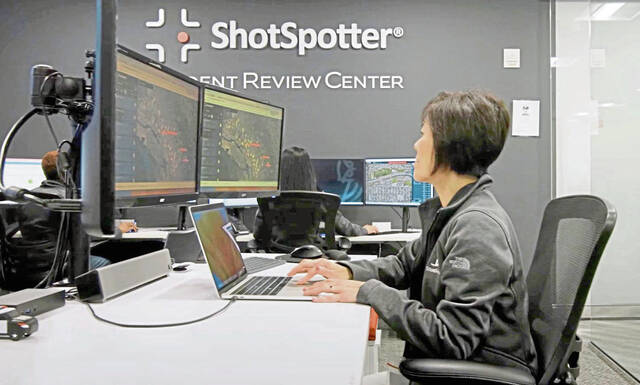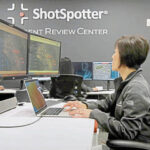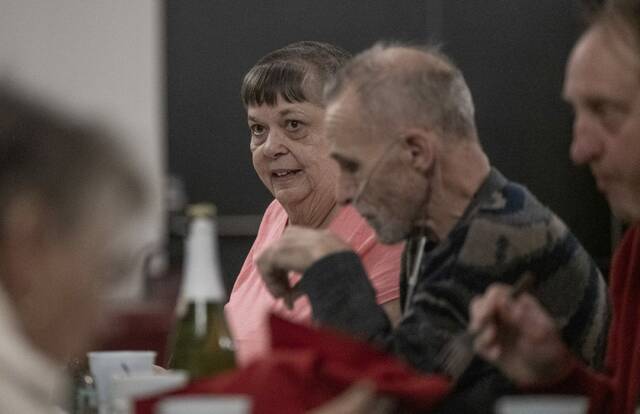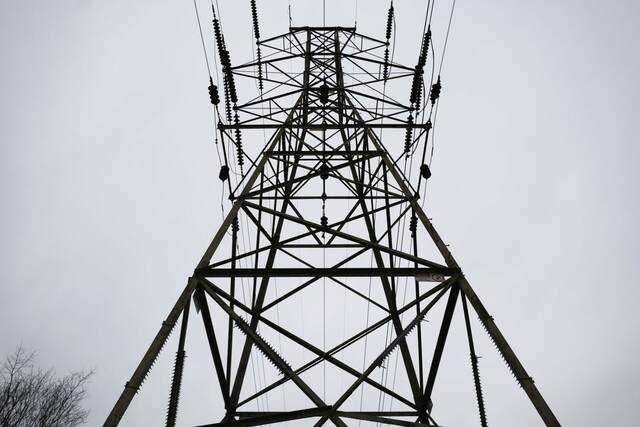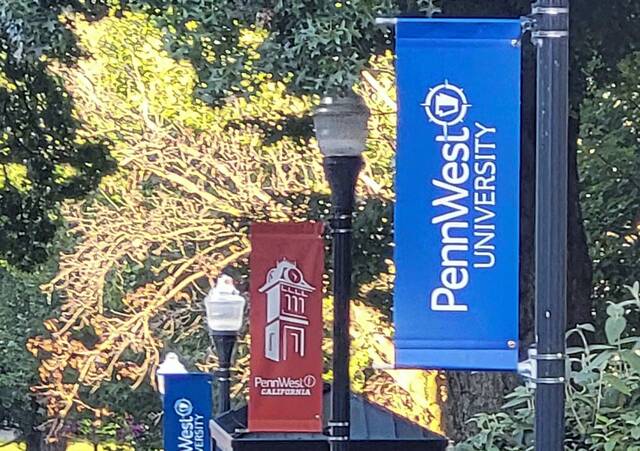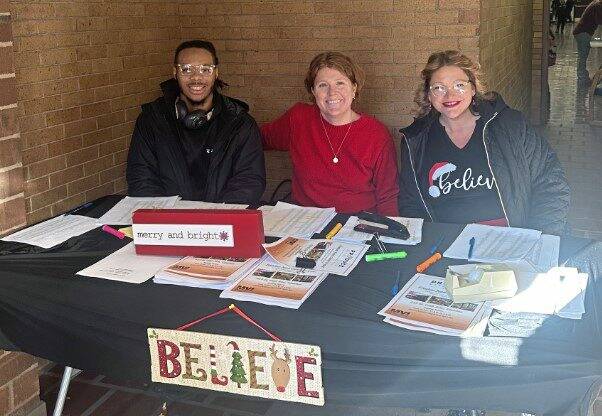Over the past decade, Pittsburgh has sunk nearly $10 million into ShotSpotter, the most widely used gunshot-detection system in America. The controversial crime-fighting technology uses sound to quickly pinpoint gunfire, allowing police to be rapidly deployed to crime scenes.
Its makers claim it can help reduce gun violence and save lives.
But as the city stands on the cusp of expanding its ShotSpotter program and weighs renewing a contract with its parent company, California-based SoundThinking, questions have arisen about what exactly the technology is delivering and whether it’s worth the investment.
Some local leaders aren’t so sure that ShotSpotter is living up to its promise. They want evidence the system is improving public safety.
City Controller Rachael Heisler plans to audit the technology before ShotSpotter’s eight-year contract with Pittsburgh expires Dec. 31, 2025.
“We will attempt to answer two core questions,” Heisler said recently. “Does ShotSpotter make neighborhoods safer? Is ShotSpotter worth the money?”
Information can be hard to come by. Secrecy surrounds ShotSpotter, which keeps the number and locations of its sensors confidential. Even Pittsburgh’s police chief said he doesn’t know where exactly the company’s equipment is located.
Pittsburgh police don’t keep data on gunshot victim mortality rates from before ShotSpotter arrived in 2014, making it tough to link survival rates to ShotSpotter alerts.
And while officials attribute improved police response times to ShotSpotter, there is no evidence locally that the technology makes Pittsburgh safer. Four out of five ShotSpotter alerts in the city don’t even lead to a police report, a TribLive review has found.
Academics are expressing doubts about the technology. Congress is alarmed that it might be disproportionately targeting minority communities. And several major cities have abandoned ShotSpotter in recent years amid a dearth of data proving it’s driving down crime rates.
“Here’s this tool that was introduced to help alleviate the gun violence problem, and now there are a number of cities who are saying, ‘Maybe not?’ ” said Pittsburgh City Councilwoman Barb Warwick, D-Greenfield.
“In all things, including public safety, it’s important that we’re investing in things that are actually making us safer, not just making us feel like we’re safer,” she said.
Trust in technology
A California physicist created ShotSpotter in 1996. The product’s sensors and microphones use sound and its speed to pinpoint and triangulate gunfire.
It takes less than 60 seconds between a bullet leaving a gun’s barrel and alerts popping onto 911 dispatchers’ computers and officers’ smartphones or mobile laptops.
“It’s not some weird, voodoo science — the speed of sound is not in dispute,” said Tom Chittum, senior vice president at SoundThinking.
Chittum retired from the Bureau of Alcohol, Tobacco, Firearms and Explosives in 2022 as its associate deputy director.
“ShotSpotter is faster and more precise than 911 calls,” he said.
Algorithms process the data. ShotSpotter staffers in a national command center then verify whether the sounds are gunshots, and they fire off alerts to police forces in cities that are customers that have the equipment.
The technology faced early hiccups.
At first, ShotSpotter accurately located gunfire only 45% of the time. And certain sounds — fireworks, pile drivers, the slamming of dumpster lids — mistakenly triggered gunshot alerts.
A 2007 article in the technology magazine WIRED carried a pointed criticism. “The product had proven remarkably effective — but that was due to good PR, not good technology,” the article said.
ShotSpotter was aggressively marketed to police departments throughout the country — including Pittsburgh’s — in the growing gunfire detection industry. Analysts project global revenues for the industry will triple in the next eight years to nearly $2.4 billion from last year’s $777 million.
Today, ShotSpotter can be found in 84 metropolitan areas and 34 states or U.S. territories. More than 170 law enforcement agencies use the technology, out of roughly 18,000 nationwide.
Pittsburgh police debuted it in 2014 and were followed seven years later by McKeesport police. In Pennsylvania, only three other law enforcement agencies — in Delaware, Erie and Montgomery counties — use ShotSpotter.
SoundThinking boasts that ShotSpotter is 97% accurate at detecting gunfire. But increasingly there are questions about how that accuracy benefits cities.
The issue is especially relevant in Pittsburgh, which inked a deal in June to expand ShotSpotter for one year into the southern neighborhood of Carrick for about $132,000. The system is set to be up and running by the end of August.
Carrick is represented by Councilman Anthony Coghill, D-Beechview, who voted in April for the expansion.
“My communities want it,” Coghill said. “I feel it’s an added safety measure.”
Coghill noted that police Chief Larry Scirotto supports ShotSpotter.
“I defer to the police in this situation — and Chief Scirotto, he’s bullish on it,” Coghill said.
Scirotto said the technology yields helpful data for investigations.
“Is there empirical data with a 100% degree of certainty that says that technology prevents gun violence?” Scirotto said. “People can continue to say there’s no value in [ShotSpotter] technology. So what is a life worth?”
“It’s another tool in this toolbox of information,” he added. “I trust in the technology.”
Murky metrics
On its website, SoundThinking claims that “ShotSpotter helps save lives.” But the correlation isn’t so clear.
In Pittsburgh, SoundThinking said 13 gunshot victims were “found with the help of ShotSpotter” during a recent two-year period. A link on its website takes readers to a 2021 city of Pittsburgh press release explaining that in 13 cases over the prior two years, first responders were alerted to shooting victims only by ShotSpotter.
“Without the ShotSpotter notification, it is unknown when, if ever, first responders would have been notified and given the opportunity to provide life-saving care,” according to the press release.
However, there’s no way to tell whether first responders would have been alerted otherwise, and there’s no data showing that the victims would have died without the ShotSpotter notification.
Thaddeus Johnson is skeptical about whether the system improves mortality rates for gunshot victims. A former Memphis, Tenn., police officer who teaches criminology at Georgia State University, Johnson said ShotSpotter lacks data about its role in saving lives. He said “there have been no changes in patient outcomes.”
Officials from UPMC and Allegheny Health Network, Pittsburgh’s two main hospital chains, were not able to provide data on how gunshot victims have fared in their emergency rooms since ShotSpotter arrived.
SoundThinking uses other metrics to measure ShotSpotter’s effectiveness.
Some are straightforward, such as improved response time by first responders. In Pittsburgh, ShotSpotter has helped slash about 60 seconds off the average response time for city police to shots fired since it was rolled out in a pilot program in the East End, city police data showed.
SoundThinking claims its technology results in improved evidence collection, such as gathering shell casings.
And in what is perhaps the murkiest metric — how ShotSpotter affects gun violence — SoundThinking calls it a “complex issue without any one solution.”
“However, studies have shown that ShotSpotter can contribute to reductions when used as part of a comprehensive gun crime response strategy,” the company said.
Johnson, the Georgia State criminologist, is plainspoken about his views on whether ShotSpotter makes communities safer.
“I have not found anything that shows ShotSpotter directly decreases gun violence,” Johnson said. “It can be used as an investigative tool — it’s a resource. But there doesn’t seem to be a correlation between gun violence rates or shootings and the ShotSpotter program.”
Skeptics abound
Daniel Webster, a Johns Hopkins University criminology professor, learned about ShotSpotter at a National Institutes of Justice conference held shortly after police started using the technology in the mid-1990s.
He was sold.
“In concept and in theory, it seemed like a great idea: Let’s get officers to scenes more quickly,” said Webster, whose teaching career has coincided with ShotSpotter’s growth nationally.
Today, however, Webster believes there’s a lack of data to back up ShotSpotter’s claims that its technology helps to “make communities safer and healthier.”
“It’s been around for about 30 years now,” Webster said. “And I have yet to see anyone come forward and say, ‘This is how we applied ShotSpotter, and this is how it drove down crime.’ ”
In recent years, various scholarly publications have underscored Webster’s concerns.
An October 2021 government study in the Journal of Urban Health, which analyzed data from 68 metropolitan counties, found that “ShotSpotter technology has no significant impact on firearm-related homicides or arrest outcomes.”
In Kansas City, Mo., ShotSpotter alerts had little bearing on evidence collection, according to a study published last year in the Journal of Experimental Criminology.
And a Northeastern University study published in January found that while ShotSpotter helps police detect and respond to gunshots, it has not created “any public safety gains.”
Chittum, the SoundThinking executive, called ShotSpotter’s critics and their findings “reckless” and “irresponsible.”
“We say, ‘This is a tool. It is only a tool,’ ” Chittum said. “How you use it affects the results you’ll get.”
Cities part ways
Even as Pittsburgh has doubled down on ShotSpotter, some cities have parted ways with it.
Police in Charlotte, N.C., abandoned the technology in 2016. They said it didn’t help them make more arrests or save more victims.
The following year, San Antonio dropped ShotSpotter. The technology, in use for just a year, cost taxpayers nearly $550,000 and led to just four arrests in 2016. About 80% of their ShotSpotter alerts yielded no evidence, San Antonio police said.
San Diego left in 2021.
Chicago has grappled publicly with ShotSpotter. Since 2018, its bill for the technology has topped $53 million.
Within two years of signing up, Chicago police responding to gunshot alerts were finding evidence of gun-related crimes only 9% of the time, according to a May 2021 study from Northwestern University’s MacArthur Justice Center.
In February, Chicago officials said they wouldn’t renew the contract. Then they extended it for nine months — at an added cost of $8.6 million.
It’s hard to say how many police forces have cut ties with the program. SoundThinking declines to release that information.
In Pittsburgh, taxpayers have shelled out nearly $8.5 million since 2017 for ShotSpotter, which monitors one-third of the city’s 58 square miles.
Its supporters include the Allegheny County District Attorney’s Office. First Assistant District Attorney Becky Spangler praised the system’s quick alerts.
“Early notification to first responders of shots fired saves lives,” Spangler said in an emailed statement.
She didn’t respond, however, when asked for data showing ShotSpotter’s effectiveness.
Some statistics might help tell the tale in Pittsburgh.
ShotSpotter reported more than 3,000 gunshot alerts in Pittsburgh in both 2022 and 2023, police data showed. But when City Council in February was weighing the Carrick expansion, police provided information about only 990 of them — the ones that led to an injured victim, an arrest or recovered evidence.
Pittsburgh police recovered a gun in connection with fewer than 150 of those alerts, a TribLive review found. And they aided gunshot victims in response to less than 20% of ShotSpotter notifications. Last year, Pittsburgh police didn’t even write reports in roughly 80% of ShotSpotter alerts. Hundreds of incidents were deemed “unfounded.”
Raw data showed 911 calls last year accounted for nearly four times the number of Pittsburgh police arrests than ShotSpotter alerts.
Pittsburgh’s murder rate hasn’t changed much since ShotSpotter arrived. In 2018, when ShotSpotter was installed to cover three square miles in East End neighborhoods, the city’s murder rate was 18.8 per 100,000 residents. In 2022, it rose to 21.8 before settling at 17.7 last year, when Pittsburgh’s murder rate ranked 15th highest in the nation.
Concerns in Congress
“Beyond the question of ShotSpotter’s effectiveness are concerns about discrimination, civil rights violations and the system’s impact on policing practices and minority communities,” the legislators wrote.
SoundThinking has declined to comment on the technology’s impact in Pittsburgh’s minority communities.
“Generally, ShotSpotter has restrictions in their contracts about releasing data,” said Webster, the criminology professor. “That doesn’t seem consistent with a healthy democracy, with an informed populace.”
Exacerbating the issue: SoundThinking keeps the location of its ShotSpotter equipment secret. No public records exist describing the equipment ShotSpotter installed in Pittsburgh or where it’s located, according to the city’s open-records office, which denied a Right to Know request from TribLive.
Pittsburgh officials also said there’s no record of correspondence between city officials and SoundThinking about where to place sensors or microphones, or why.
Chittum, the SoundThinking executive, declined to provide equipment locations in Pittsburgh to TribLive. He said the information is “proprietary” but did not elaborate.
Measuring success
Warwick, the Pittsburgh councilwoman, hopes ShotSpotter’s expansion into Carrick will provide richer data and more “apples to apples” comparisons.
When weighing a contract renewal, Warwick said, she wants to review response times, arrest trends and gunshot victims’ health outcomes from before and after the technology was put in place.
“Given the fact that, in other cities, the utility of ShotSpotter has been called into question, it just seems like a good time to take a look at how we’re using the tool, to look at how effective it’s been in Pittsburgh,” Warwick said.
Johnson, the Georgia State criminologist, said there’s no proof ShotSpotter’s claims justify its cost.
“Why do we continue to invest in this expensive technology instead of spending money on other services?” Johnson asked. “I just think we can use that money a lot better.”
Ed Vogel, a Chicago-based member of Stop ShotSpotter, a national coalition of organizers and activists, frames the question another way.
“What is the metric by which ShotSpotter is actually successful in this city?” Vogel said. “I am not sure I have heard an answer.”



